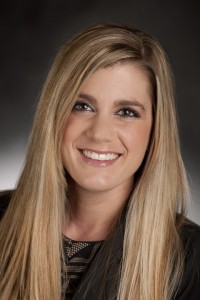Years ago, the only ways to connect was meeting face-to-face, using a telephone or through mail. Today we are connected in every way possible. We can call, text, email, FaceTime and message with our smartphone or through online portals. It can become overwhelming navigating all of the portals of communication. Often we wonder, “What is the best way to communicate?”
Our mission is to connect our alumni to us, the university and each other. With all of these options, it can become a challenge to find the best avenues of communication to reach all of our alumni.
I recently attended an alumni conference in Boston, Mass., where this was a main topic of discussion.
 Most universities in attendance have found much success using LinkedIn, not only because
it’s a great professional networking tool, but it also has the ability to make specific
connections based on the information you provide in your profile. LinkedIn has taken
great steps to serve higher education and offer ways to more easily connect to groups
you have an association with.
Most universities in attendance have found much success using LinkedIn, not only because
it’s a great professional networking tool, but it also has the ability to make specific
connections based on the information you provide in your profile. LinkedIn has taken
great steps to serve higher education and offer ways to more easily connect to groups
you have an association with.For example, if you type “Texas Tech University Health Sciences Center” into the search bar, you’ll find almost 5,000 members. The home page alone gives you a breakdown of undergraduate and graduate members, plus faculty count and the male and female ratio. If you click the “Students and Alumni” tab, which is next to the home page tab, it takes you to a page that shows the members’ profiles numerical data. These numeric graphs are what you use to search the content you are interested in, clicking each graph to narrow and design your search.
As another example, let’s say I am a School of Allied Health Sciences alumna and recently applied for a research position at MD Anderson Cancer Center in Houston. I want to see if any TTUHSC alumni work there with whom I can make a connection. When I do the search, I find 364 alumni who live in the Houston area. Once I click on “Houston” I see where those 364 people are working; 21 of those are at MD Anderson. By clicking on “MD Anderson,” I can see what positions they have. Other search options include finding students who attended during specific years; alumni who graduated in a specific year, etc.
Being able to connect to our 20,000-plus alumni is important to the growth and strength of the TTUHSC Alumni Association. In the near future we plan to create a LinkedIn account specifically for the association, adding another avenue for our alumni to not only connect with each other, but also with faculty members, students and our office.
In our efforts to build this connection, we want to hear from you. What is your favorite form of communication? Tell us what tools work best in keeping you connected. Send your comments to TTUHSCAlumni@ttuhsc.edu.
And be on the lookout for our LinkedIn page!

Laura Ray
Alumni Coordinator
